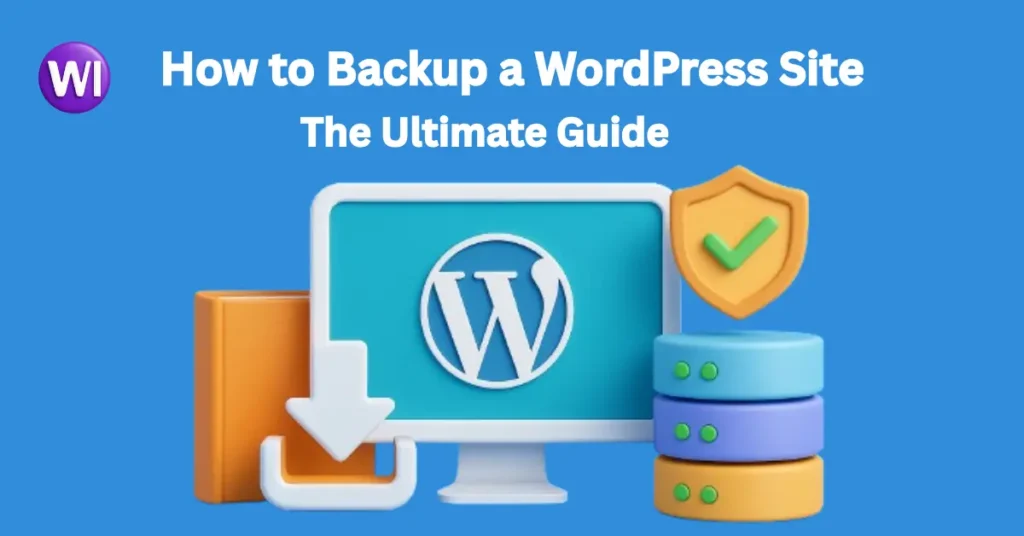Imagine waking up one day to find your WordPress site completely down—or worse, hacked. All your content, design work, and data… gone. Scary, right? That’s why learning how to backup a WordPress site isn’t just smart—it’s essential.
Whether you’re running a personal blog or a full-scale eCommerce store, regular backups act like an insurance policy for your online presence. In this article, we’ll break down the best methods to backup your WordPress site in 2025: safely, efficiently, and without needing to be a tech wizard.
Why WordPress Backups Matter More Than Ever
In 2025, cyberattacks, plugin conflicts, and hosting failures are more common than most website owners realize. According to a recent Forbes Tech Council, over 40% of small business websites that experience downtime or data loss never fully recover.
So what does this mean for you? Simple: If your WordPress site isn’t backed up, you’re playing a dangerous game.
3 Foolproof Ways to Backup a WordPress Site
✅ 1. Use a Reliable WordPress Backup Plugin
The easiest way to backup your site—without touching code—is to use a WordPress backup plugin. Popular options include:
-
UpdraftPlus (Free + Premium)
-
BlogVault
-
Jetpack VaultPress
-
BackupBuddy
Why it works:
These plugins allow you to automate daily or weekly backups, store them in the cloud (Google Drive, Dropbox, etc.), and restore your site with just a few clicks.
Need help choosing or setting up a plugin? Our team at Wix Infotech can help.
2. Manual WordPress Backup (For Full Control)
If you’re more hands-on or just want to double up your safety net, you can manually backup your site. This involves two things:
A. Backup Your Files (Themes, Plugins, Media, etc.):
Use an FTP tool like FileZilla to connect to your web host and download everything from the /public_html/ or /wp-content/ directory.
B. Backup Your Database:
Log into your hosting control panel (like cPanel), go to phpMyAdmin, select your site’s database, and click Export.
✅ Make sure you save these files in a safe location—preferably with versioning and off-site storage.
3. Backup via Your Web Hosting Provider
Most modern hosting companies (like Bluehost, SiteGround, and WP Engine) offer built-in backup options—some even daily. If you’re using managed WordPress hosting, this may already be included in your plan.
Benefits of host-level backups:
-
No plugins to install
-
Automatic scheduling
-
One-click restore options
🔗 Google’s official blog even recommends combining hosting and plugin-based backups for maximum coverage.
Where to Store Your WordPress Backups Safely
Redundancy is key. Never store backups only on your server—that defeats the purpose. Here’s where we recommend storing copies:
-
✅ Google Drive – Reliable and free up to 15GB
-
✅ Dropbox – Integrates well with plugins
-
✅ Amazon S3 or Wasabi – For high-volume backup needs
-
✅ External Hard Drive – Optional offline peace of mind
How Often Should You Backup a WordPress Site?
There’s no one-size-fits-all answer, but here’s a general rule:
| Website Type | Backup Frequency |
|---|---|
| Blog (weekly posts) | Weekly |
| eCommerce Site | Daily or twice daily |
| Static Business Website | Bi-weekly or monthly |
| News/High Traffic Site | Real-time backups |
🔁 At Wix Infotech, we set up automated backup routines based on your website activity. Schedule a free consultation today.
Common Backup Mistakes to Avoid
Even seasoned WordPress users make these slip-ups:
-
❌ Not testing the backup before you need it
-
❌ Storing all backups on the same server as the site
-
❌ Overwriting old backups with no versioning
-
❌ Assuming your host “probably has it covered”
Related Articles 👇
Bonus: How to Restore Your WordPress Site from a Backup
In the event something goes wrong, your backup is only useful if you know how to restore it.
Most backup plugins (like UpdraftPlus) have a Restore button. Simply log in to your WordPress dashboard, go to the plugin settings, and follow the prompts.
For manual backups:
-
Re-upload your files via FTP
-
Import your database via phpMyAdmin
Pro Tip: Always test your restore process on a staging site before applying it to your live site.
Conclusion: Don’t Wait for Disaster to Strike
Backing up your WordPress site is one of those things you’ll wish you did—until it’s too late. Fortunately, with today’s tools and strategies, it’s easier than ever to keep your website safe, secure, and recoverable.
Whether you’re a blogger, small business owner, or managing an online store, knowing how to backup a WordPress site should be a non-negotiable part of your workflow.
Ready to Secure Your WordPress Site Like a Pro?
Don’t let a technical glitch or hacker wipe out your hard work. Visit WixInfotech.com to explore our full range of WordPress services, or contact us for help setting up a smart, automated backup system.
Your site deserves protection. Let’s make it happen.

